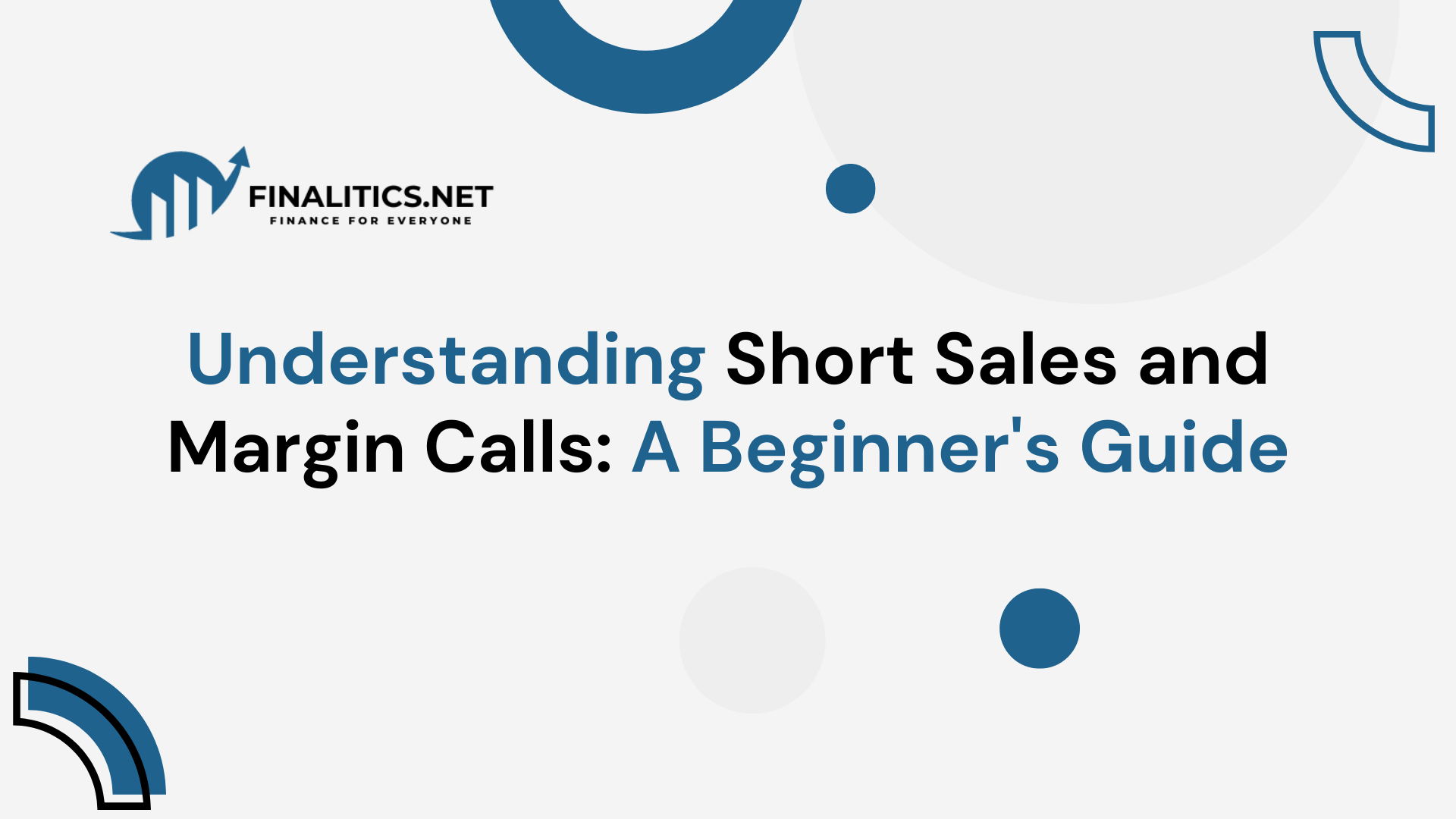Investing in the stock market involves buying and selling shares to earn profits. Most investors follow a simple strategy: buy a stock at a low price and sell it at a higher price. However, there’s another fascinating way to profit in the stock market called short sale, which involves reversing the usual order: sell first and buy later.
This guide explains the concept of short sales, the risks involved, and the importance of understanding margin calls in short selling, with examples and equations to make it beginner-friendly.
Table of Contents
- What is Short Sale?
- Key Steps in Short Sale
- Short Sale Equation
- Example of Short Selling
- What is a Margin Call in Short Sales?
- Margin Call Equations
- Example: Margin Call on Dot Bomb Stock
- Key Risks of Short Selling
- Conclusion: Understanding Short Selling
What is Short Sale?
A short sale allows investors to profit when a stock’s price falls. Instead of buying a stock, you borrow shares from a broker and immediately sell them in the market. Later, you buy back the same number of shares (known as “covering the short position”) and return them to the broker. If the stock’s price falls, you can buy back the shares at a lower price, keeping the difference as profit.
Key Steps in Short Sale
- Borrow Shares: You borrow shares from your broker.
- Sell Shares: You sell the borrowed shares in the market, receiving cash.
- Buy Back Shares: Later, you buy the shares back at the market price (hopefully lower than the selling price).
- Return Shares: You return the shares to the broker and keep the profit (or bear the loss).
Short Sale Equation
The profit or loss from a short sale is calculated as:
$$ \text{Profit (or Loss)} = \text{Initial Sale Price} – (\text{Final Purchase Price} + \text{Dividends Paid}) $$
Where:
- Initial Sale Price = The price at which the borrowed shares are sold.
- Final Purchase Price = The price at which you buy back the shares.
- Dividends Paid = Any dividends the stock paid during the short sale that you owe to the lender.
Example of Short Selling
Let’s assume:
- Alex believes the stock price of Dot Bomb will fall.
- The stock is currently trading at $100 per share.
- Alex borrows 1,000 shares from their broker and sells them immediately for $100 per share, earning $100,000.
Scenario 1: Price Drops
If the stock price falls to $70 per share, Alex buys back the 1,000 shares for:
- Cost to Buy Back = 1,000×70 = 70,000USD
Alex’s profit is:
- Profit = 100,000−70,000 = 30,000USD
Scenario 2: Price Rises
If the stock price rises to $120 per share, Alex must buy back the shares for:
- Cost to Buy Back = 1,000×120 = 120,000USD
Alex incurs a loss of:
- Loss = 100,000−120,000 = −20,000USD
What is a Margin Call in Short Sales?
When short selling, brokers require you to deposit margin (cash or collateral) in your account to protect against potential losses. This margin acts as a safety net if the stock price rises. A margin call occurs when your margin falls below a certain threshold (known as the maintenance margin) due to a rise in the stock price. In this case, the broker will ask you to either:
- Deposit additional funds to restore the margin level, or
- Close your position by buying back the shares, potentially locking in a loss.
Margin Call Equations
The broker calculates the margin ratio to monitor your account. The formula is:
$$ \text{Margin Ratio} = \frac{\text{Equity}}{\text{Value of Shares Owed}} $$
Where:
- Equity = Total account value – Value of shares owed.
- Value of Shares Owed = Current stock price ×\times× Number of shares owed.
The broker requires this ratio to stay above a specific maintenance margin (e.g., 30%).
Example: Margin Call on Dot Bomb Stock
Let’s revisit Alex’s short sale, where:
- Alex sold 1,000 shares at $100 per share.
- The initial account balance was $150,000 (including a $50,000 deposit).
- The maintenance margin is 30%.
Critical Stock Price for a Margin Call
We calculate the stock price (PPP) at which the margin ratio hits 30%:
1. Equity: Equity = 150,000 − (1,000×P)
2. Value of Shares Owed: Value of Shares Owed = 1,000×P
3. Margin Ratio:
$$ \frac{150,000 – (1,000 \times P)}{100 \times P} = 0.3 $$
4. Solve for P:
150,000 = 1,000 × P (0.3+1)
P = 150,000/1,300 = 115.38
At $115.38 per share, Alex’s margin ratio falls to 30%, triggering a margin call.
What Happens Next?
If the price rises above $115.38:
- Alex must deposit more money to maintain the margin ratio.
- Alternatively, Alex must close the short position by buying back the shares at the current price, potentially at a loss.
Key Risks of Short Selling
- Unlimited Loss Potential: Unlike traditional investing, where losses are limited to your initial investment, short selling has no upper limit to losses if the stock price rises.
- Margin Calls: A rising stock price can quickly deplete your equity and lead to margin calls, requiring you to add funds or sell assets to cover losses.
- Dividends and Fees: If the stock pays dividends during the short sale, you must pay these to the lender. Additionally, brokers charge fees for borrowing shares.
Conclusion: Understanding Short Selling
Short selling is a powerful strategy to profit from falling stock prices, but it carries significant risks. It requires careful monitoring of the stock price, account equity, and margin requirements to avoid large losses or margin calls.
By understanding the equations and examples discussed here, even beginners can grasp the mechanics of short selling and make informed decisions about whether this strategy aligns with their investment goals.
Relevant Links:
- Buying on Margin | Maintenance Margin | Margin Call – Full Explanation with Example.


